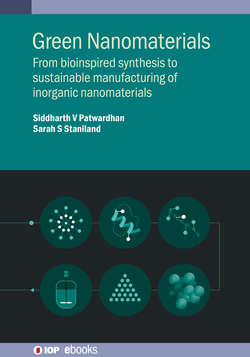Читать книгу Green Nanomaterials - Siddharth Patwardhan - Страница 33
На сайте Литреса книга снята с продажи.
2.4.3.1 Titania and zinc oxide
ОглавлениеTitania and zinc oxide form the active components of sunscreens due to their ability to specifically interact with UV light (absorb or reflect) but not visible light. As discussed in the optical properties section above, it is their size and specific chemistry that enables them to block UV rays (both UV-A and UV-B in the range of 320–400 nm and 290–320 nm, respectively). The interactions of these two materials arise from their band gaps, which allow them to absorb UV rays; the specific wavelengths of absorption depend on the actual band gap (which in turn depends on the chemistry and sizes) of the materials. Generally, titania is most effective in blocking the UV-B range, while ZnO blocks the UV-A range. Using nano-sized (<100 nm) titania or ZnO makes them transparent in visible light, as well as enabling control over their band gaps (which become dependent on the particle sizes, as seen in section 2.2).
